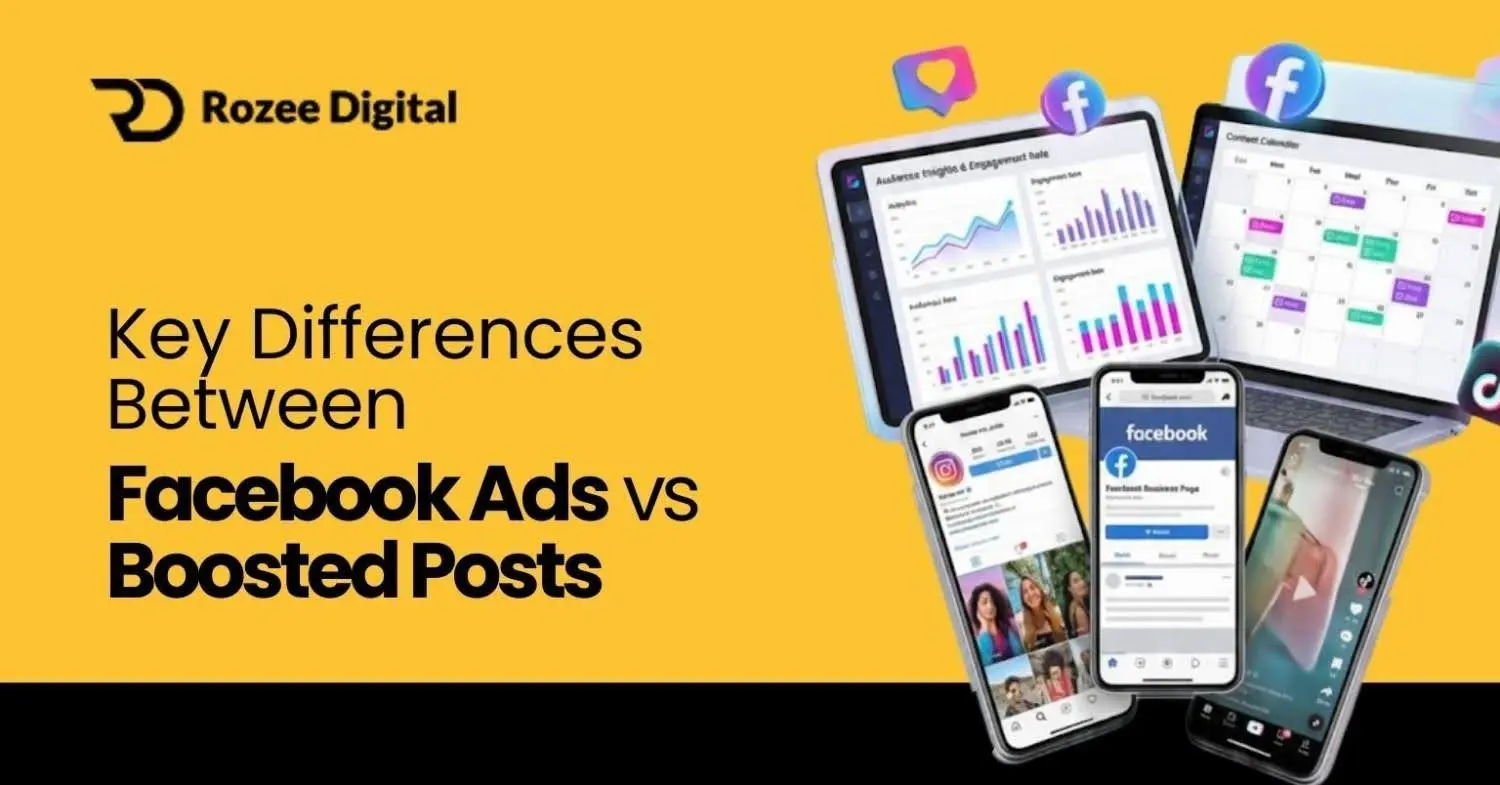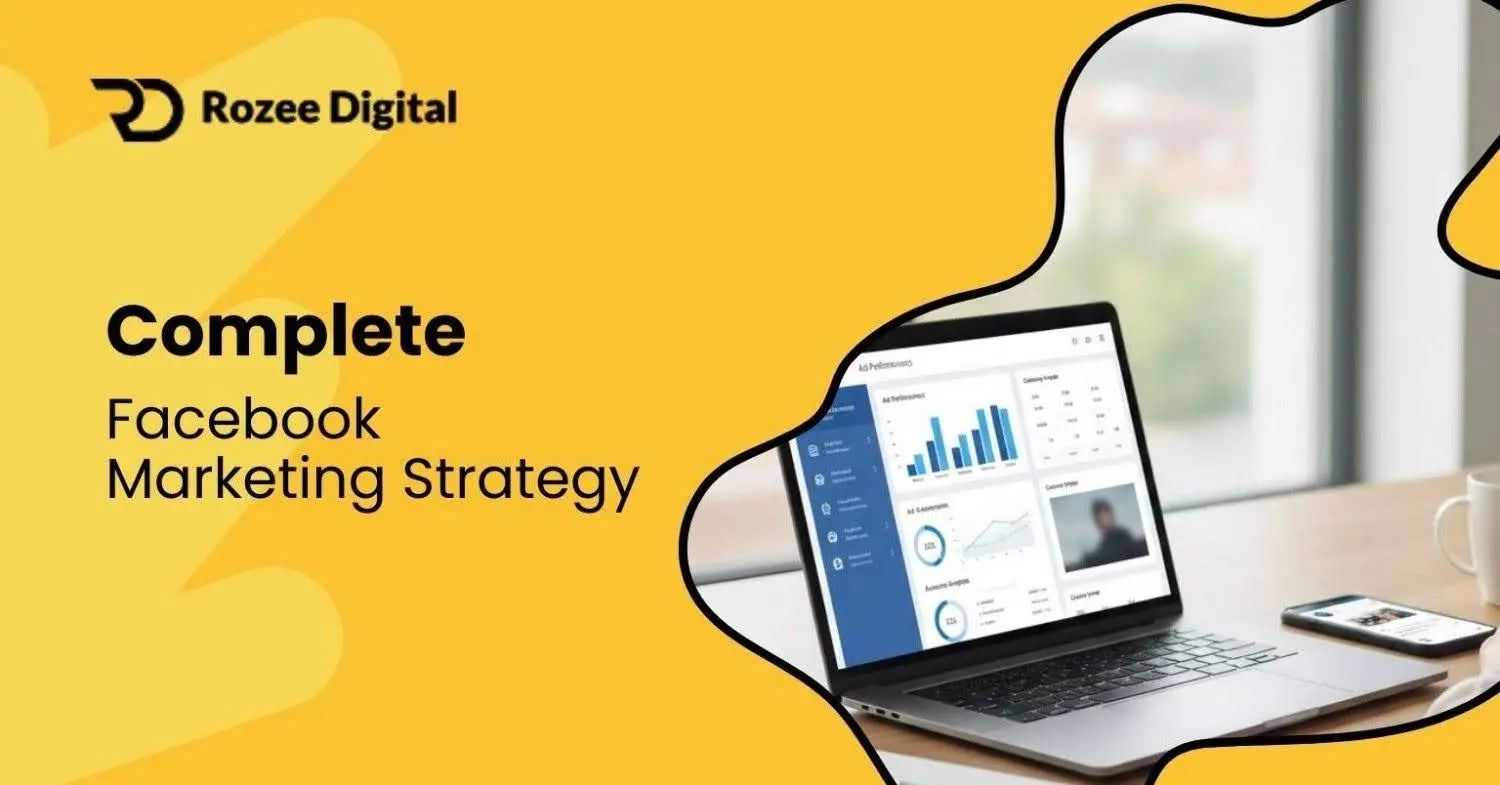
Understanding Conversion Rate Optimisation (CRO)
In the fast-paced world of ecommerce, conversion rate optimisation (CRO) plays a vital role in helping businesses maximize their online success. By understanding the ins and outs of CRO, ecommerce brands can unlock the potential to convert more website visitors into customers.
What is Conversion Rate Optimisation?
Conversion rate optimisation (CRO) is the process of enhancing a website’s performance to increase the percentage of visitors who take the desired action, such as making a purchase, submitting a form, or subscribing to a newsletter. It involves analyzing data, making strategic changes, and continuously testing and refining various elements of a website to maximize its conversion potential.
CRO takes a data-driven approach, utilizing insights gained from user behavior analysis, A/B testing, and other research techniques to identify pain points and areas of improvement within the conversion funnel. By implementing targeted changes, ecommerce brands can enhance the user experience, optimize conversion paths, and ultimately boost their conversion rates.
The Importance of CRO for Ecommerce Brands
For ecommerce brands, CRO is crucial for achieving sustainable growth and maintaining a competitive edge in the digital landscape. Here are a few reasons why CRO is of paramount importance:
- Maximizing ROI: By increasing the conversion rate, ecommerce brands can generate more revenue from their existing website traffic, allowing them to maximize their return on investment.
- Enhancing User Experience: CRO focuses on improving the overall user experience by addressing any barriers that hinder visitors from taking the desired action. This can lead to increased customer satisfaction, improved brand perception, and higher customer loyalty.
- Staying Ahead of Competitors: In a highly competitive ecommerce market, CRO enables brands to differentiate themselves by delivering a seamless and optimized online experience. This can help attract and retain customers, even in the face of fierce competition.
- Reducing Customer Acquisition Costs: By optimizing the conversion funnel and increasing the conversion rate, ecommerce brands can acquire more customers without having to invest heavily in additional marketing efforts. This can lead to significant cost savings in the long run.
To effectively implement CRO strategies, ecommerce brands should focus on key elements such as data analysis and research, user experience (UX) design, and A/B testing and experimentation. These elements, along with a deep understanding of the conversion barriers and best practices, form the foundation for successful CRO initiatives.
In the next sections, we will delve deeper into these elements and explore various strategies and tactics to optimize the conversion funnel. Stay tuned to learn more about how to crack the code of CRO and drive success for your ecommerce business.
Key Elements of CRO Strategies
To effectively optimize conversion rates, ecommerce brands need to implement a well-rounded Conversion Rate Optimization (CRO) strategy. This involves a combination of data analysis and research, User Experience (UX) design, and A/B testing and experimentation.
Data Analysis and Research
Data analysis and research play a crucial role in understanding user behavior and identifying areas for improvement. By analyzing website analytics, heatmaps, and conversion funnels, brands can gain valuable insights into user interactions and identify bottlenecks in the conversion process.
Through the use of tools like Google Analytics or other analytics platforms, brands can track key metrics such as bounce rate, conversion rate, and average time on page. This data provides a foundation for identifying areas of the website that may require optimization to improve the overall conversion rate.
In addition to quantitative data, qualitative research methods such as user surveys, interviews, and user testing can help uncover user preferences, pain points, and barriers to conversion. This qualitative data provides deeper insights into user motivations and can help guide decision-making during the optimization process.
User Experience (UX) Design
User experience design is a critical element of CRO strategies. It focuses on creating a seamless and enjoyable browsing experience for users, ultimately leading to increased conversions. UX design involves optimizing website layout, navigation, and visual elements to enhance usability and engagement.
Effective UX design considers factors such as page load speed, mobile responsiveness, intuitive navigation, and clear call-to-actions (CTAs). By ensuring that the website is user-friendly and visually appealing, brands can reduce bounce rates and encourage visitors to explore further.
To improve user experience, it’s important to conduct usability testing and gather feedback from users. This helps identify pain points and areas for improvement, allowing brands to make data-driven design decisions that enhance the overall user experience.
A/B Testing and Experimentation
A/B testing, also known as split testing, is a technique used to compare two or more variations of a webpage to determine which performs better in terms of conversion rate. By creating multiple versions of a webpage and testing them simultaneously, brands can identify the most effective elements and make data-backed decisions to optimize conversion rates.
A/B testing can involve testing different layouts, headlines, CTAs, or even entirely different designs. By measuring the performance of each variation, brands gain insights into what resonates best with their audience and can make incremental improvements to increase conversions.
It’s important to note that A/B testing should be conducted systematically, with a clear hypothesis and a sufficient sample size to ensure statistical significance. This allows brands to confidently implement changes based on the test results.
By incorporating data analysis and research, User Experience (UX) design, and A/B testing and experimentation into their CRO strategies, ecommerce brands can identify areas of improvement and make data-driven decisions to optimize their conversion rates. The continuous refinement of these elements ensures that brands stay ahead of the competition and achieve their conversion goals.
Identifying Conversion Barriers
To effectively optimize conversion rates, it is essential to identify and address the conversion barriers that prevent users from taking the desired actions on your website. By understanding these barriers, ecommerce brands can implement strategies to overcome them and improve their conversion rates.
Common Conversion Barriers
Several common conversion barriers may hinder users from completing desired actions on your website. These barriers include:
- Lack of trust: Users may hesitate to make a purchase or share personal information if they do not trust your website or brand. Building trust through security measures, customer reviews, and trust badges can help overcome this barrier.
- Complicated or lengthy forms: If your website requires users to fill out complex or time-consuming forms, it can discourage them from completing the conversion. Simplifying forms and minimizing the number of required fields can alleviate this barrier.
- Slow website speed: A slow-loading website can frustrate users and lead to high bounce rates. Optimizing website speed by compressing images, minifying CSS and JavaScript, and utilizing caching techniques can help overcome this barrier.
- Poor mobile experience: With the increasing use of mobile devices for online shopping, a poor mobile experience can significantly impact conversion rates. Implementing responsive design and ensuring mobile-friendly navigation and checkout processes is crucial.
- Lack of clear value proposition: If users do not understand the unique value your products or services offer, they may be hesitant to convert. Clearly communicating your value proposition through compelling content and visuals can address this barrier.
Strategies to Overcome Conversion Barriers
To overcome these common conversion barriers, consider implementing the following strategies:
- Optimize website design: Create an intuitive and user-friendly website design that guides users through the conversion process. Utilize clear and prominent calls-to-action (CTAs) to direct users towards desired actions.
- Build trust: Incorporate trust signals such as customer testimonials, security badges, and money-back guarantees to instill confidence in users. Displaying social proof and showcasing positive reviews can help build trust with potential customers.
- Simplify forms: Minimize the number of form fields and only ask for essential information. Implement autofill features and progress indicators to streamline the form-filling process and reduce user friction.
- Improve website speed: Optimize website performance by compressing images, leveraging browser caching, and utilizing content delivery networks (CDNs). Regularly monitor website speed and make necessary improvements to ensure a fast and seamless user experience.
- Enhance mobile experience: Adopt a mobile-first approach to design and optimize your website for mobile devices. Implement responsive design, ensure mobile-friendly navigation, and optimize mobile checkout processes to provide a smooth experience for mobile users.
By identifying and addressing these conversion barriers, ecommerce brands can significantly improve their conversion rates and enhance overall user experience. Regularly analyze user behavior, conduct A/B testing, and implement ongoing optimizations to continuously refine and improve the conversion process.
Optimising the Conversion Funnel

To effectively optimise the conversion funnel, it’s important to understand the different stages that customers go through when making a purchasing decision. By addressing each stage of the funnel, ecommerce brands can increase their chances of converting visitors into customers. The key stages of the conversion funnel are the awareness stage, the consideration stage, and the decision stage.
Awareness Stage
In the awareness stage, potential customers become aware of your brand and offerings. It is crucial to capture their attention and provide them with valuable information that piques their interest. This can be achieved through various strategies such as search engine optimization (SEO), content marketing, and social media marketing. By creating engaging and informative content, you can attract and educate your target audience. Consider linking your content to relevant articles like landing page optimization to further enhance the user experience and guide them towards conversion.
Consideration Stage
Once customers move to the consideration stage, they are actively evaluating different options and comparing alternatives. It is essential to provide them with the necessary information to make an informed decision. This can be accomplished by offering detailed product descriptions, customer reviews, and comparative guides. Additionally, incorporating live chat support or a frequently asked questions (FAQ) page can address any concerns or questions customers may have. By providing transparent and relevant information, you can establish trust and encourage potential customers to move closer to conversion.
Decision Stage
In the decision stage, customers are ready to make a purchase. It is essential to create a seamless and intuitive experience to facilitate the final step. Here, a streamlined checkout process is crucial. Eliminate unnecessary steps and reduce friction by enabling guest checkout options and offering multiple payment methods. Additionally, consider implementing personalisation techniques such as tailored product recommendations based on customer preferences. This can enhance the customer experience and increase the likelihood of conversion. For more insights on increasing conversion rates, you can refer to our article on increase conversion rates.
By optimising each stage of the conversion funnel, ecommerce brands can guide potential customers towards conversion. Remember to monitor and analyse the performance of each stage using relevant key performance indicators (KPIs) and conversion rate optimisation tools. This will help you identify areas for improvement and refine your strategies to continuously enhance the conversion funnel.
Best Practices for Conversion Rate Optimisation
To maximize the effectiveness of your conversion rate optimisation (CRO) efforts, it’s important to implement best practices that have proven to yield positive results. Here are three key practices that can help improve your conversion rates:
Clear Call-to-Actions (CTAs)
Clear and compelling call-to-actions (CTAs) are essential for guiding visitors towards the desired actions on your website. Whether it’s making a purchase, signing up for a newsletter, or downloading an e-book, CTAs play a crucial role in directing user behaviour.
To create effective CTAs, it’s important to use concise and action-oriented language. Use words that prompt immediate action, such as “Buy Now,” “Sign Up,” or “Download.” Additionally, make sure CTAs stand out visually by using contrasting colors, larger fonts, or buttons.
By optimizing your CTAs, you can increase the visibility and click-through rates, ultimately driving more conversions. For more tips on optimizing your landing page for conversions, check out our article on landing page optimization.
Streamlined Checkout Process
A streamlined checkout process is crucial for reducing friction and ensuring a smooth customer journey towards completing a purchase. Simplify the steps required to complete a transaction, minimize form fields, and provide clear progress indicators to keep users engaged.
Another important aspect is offering guest checkout options to avoid forcing users to create an account before making a purchase. This can significantly reduce cart abandonment rates and improve conversion rates.
Additionally, incorporate trust signals such as security badges, customer testimonials, and clear refund policies to instill confidence in potential customers. By focusing on a user-friendly and secure checkout process, you can increase the likelihood of conversions. For more tips on increasing conversion rates, visit our article on increase conversion rates.
Personalisation and Targeted Messaging
Personalisation and targeted messaging can significantly impact conversion rates. By tailoring your content, recommendations, and offers to match the specific needs and preferences of your audience, you can create a more engaging and relevant experience.
Leverage customer data and insights to segment your audience and deliver personalized content. For example, you can recommend products based on a user’s browsing history, previous purchases, or demographic information.
Moreover, implement dynamic content that adapts based on user behavior. This can include personalized product recommendations, customized landing pages, or targeted email campaigns.
By delivering personalized experiences, you can increase customer engagement and conversions. For more information on website conversion optimization, check out our article on website conversion optimization.
Implementing these best practices can help you optimize your CRO strategies and improve your conversion rates. However, it’s important to continually monitor and analyze your results to identify areas for further improvement. By using key performance indicators (KPIs) and appropriate CRO tracking and analysis tools, you can gain valuable insights and make data-driven decisions to enhance your conversion rate optimization efforts.
Measuring and Monitoring CRO Success
After implementing conversion rate optimisation (CRO) strategies, it’s crucial to measure and monitor the success of these efforts. This ensures that the changes made to improve conversions are making a positive impact. There are two key aspects to consider when measuring and monitoring CRO success: Key Performance Indicators (KPIs) and tools for CRO tracking and analysis.
Key Performance Indicators (KPIs)
Key Performance Indicators (KPIs) are quantifiable metrics that help evaluate the performance of your CRO strategies. By tracking these KPIs, you can gain valuable insights into the effectiveness of your efforts and identify areas for improvement. Here are some important KPIs to consider when measuring CRO success:
| KPI | Description |
|---|---|
| Conversion Rate | The percentage of website visitors who complete a desired action, such as making a purchase or filling out a form. |
| Average Order Value | The average amount of money spent by customers per order. |
| Bounce Rate | The percentage of visitors who leave your website without engaging further after viewing a single page. |
| Click-Through Rate (CTR) | The percentage of website visitors who click on a specific element, such as a call-to-action button or a banner. |
| Return on Investment (ROI) | The ratio of the net profit generated from your CRO efforts to the overall cost of those efforts. |
Monitoring these KPIs regularly and comparing them over time can provide valuable insights into the impact of your CRO strategies. By focusing on improving these metrics, you can continuously enhance your conversion rates and achieve your business goals.
Tools for CRO Tracking and Analysis

To effectively measure and monitor CRO success, it’s essential to leverage the right tools for tracking and analysis. These tools provide valuable data and insights that can help you make data-driven decisions. Here are some commonly used tools for CRO tracking and analysis:
- Google Analytics: A free web analytics tool that provides in-depth data on website traffic, user behavior, and conversion rates. It offers a range of features to track and analyze the performance of your CRO strategies.
- Heatmap and Session Recording Tools: Tools like Hotjar and Crazy Egg allow you to visually analyze user behavior on your website through heatmaps and session recordings. These tools provide insights into how visitors interact with your site, helping you identify areas for improvement.
- A/B Testing Tools: Platforms such as Optimizely and VWO enable you to conduct A/B tests and experiments to compare different versions of your website or specific elements. These tools help you determine which variations lead to higher conversion rates.
- Conversion Funnel Analysis Tools: Tools like Kissmetrics and Mixpanel provide detailed analysis of the conversion funnel, allowing you to track user journeys and identify drop-off points. This information helps you optimize each stage of the funnel to improve conversions.
By using these tools effectively and analyzing the data they provide, you can gain valuable insights into the success of your CRO efforts. This allows you to make informed decisions and continuously improve your conversion rates.
Measuring and monitoring CRO success is an ongoing process. By regularly tracking KPIs and utilizing the right tools for analysis, you can optimize your conversion rates and drive better results for your ecommerce brand.






